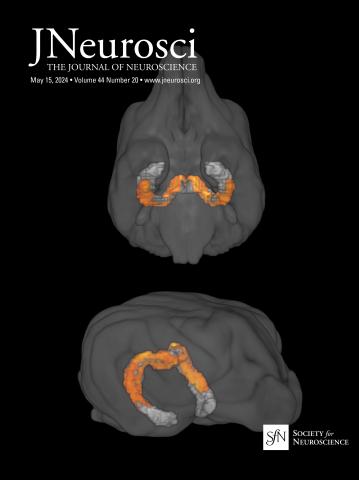Zooming in and out: Selective attention modulates color signals in early visual cortex for narrow and broad ranges of task-relevant features.
IF 4.4
2区 医学
Q1 NEUROSCIENCES
引用次数: 0
Abstract
Research on feature-based attention has shown that selecting a specific visual feature (e.g., the color red) results in enhanced processing in early visual cortex, providing the neural basis for the efficient identification of relevant features in many everyday tasks. However, many situations require the selection of entire feature ranges instead of just a single feature value, and recent accounts have proposed that broadly tuned attentional templates are often critical for guiding selection in cluttered visual scenes. To assess the neural implementation of such broad tuning of feature-based attention, we here recorded frequency-tagged potentials in human observers (male and female) while participants attended to narrow or broad ranges of colors of spatially intermingled dot fields. Our results show clear increases in the signal strength for the attended colors relative to unattended colors for both narrow and broad color ranges, though this increase was reduced for the broad-range condition, suggesting that limits in the breadth of attentional tuning arise at early processing stages. Overall, the present findings indicate that feature-selective attention can amplify multiple contiguous color values in early visual cortex, shedding light onto the neural mechanisms underlying broad search templates. More generally, they illustrate how feature-based attention can dynamically 'zoom in' and 'zoom out' in feature space, mirroring models of spatial attention.Significance statement Many daily situations require the human brain to focus attention to entire sets of feature values, for example when looking for apples in the supermarket which may range from red to yellow to green. How is such broad selection of perceptually contiguous features accomplished? Using electroencephalography, we directly measured early visual processing while participants attended to different color ranges. Our results demonstrate that processing of entire sets of colors is increased in early visual cortex, though the magnitude of this enhancement is modulated by the selected range. This result is important for our understanding of how attention is allocated in complex visual scenes in which relevant inputs are often variable and not defined by a single feature value.放大和缩小:选择性注意调节早期视觉皮层中与任务相关的窄范围和宽范围的颜色信号。
基于特征的注意研究表明,选择特定的视觉特征(如红色)可以增强早期视觉皮层的处理能力,为在许多日常任务中有效识别相关特征提供了神经基础。然而,许多情况需要选择整个特征范围,而不仅仅是单个特征值,最近的研究表明,广泛调整的注意力模板通常是在混乱的视觉场景中指导选择的关键。为了评估这种基于特征的广泛调谐的神经实现,我们在这里记录了人类观察者(男性和女性)的频率标记电位,而参与者则关注空间混合点域的狭窄或广泛的颜色范围。我们的研究结果显示,在狭窄和广阔的颜色范围内,被注意的颜色的信号强度都明显高于未被注意的颜色,尽管这种增加在广阔的颜色范围内有所减少,这表明注意力调节广度的限制出现在早期处理阶段。总的来说,目前的研究结果表明,特征选择性注意可以放大早期视觉皮层中多个相邻的颜色值,从而揭示了广泛搜索模板背后的神经机制。更一般地说,它们说明了基于特征的注意力如何在特征空间中动态地“放大”和“缩小”,反映了空间注意力的模型。许多日常情况需要人类大脑将注意力集中在整个特征值集合上,例如在超市寻找从红到黄再到绿的苹果。如此广泛的感知上连续的特征选择是如何完成的?利用脑电图,我们直接测量了参与者参与不同颜色范围时的早期视觉处理。我们的研究结果表明,早期视觉皮层对整套颜色的处理都有所增加,尽管这种增强的幅度是由选择的范围调节的。这个结果对于我们理解在复杂的视觉场景中注意力是如何分配的很重要,在这些场景中,相关的输入通常是可变的,而不是由单个特征值定义的。
本文章由计算机程序翻译,如有差异,请以英文原文为准。
求助全文
约1分钟内获得全文
求助全文
来源期刊

Journal of Neuroscience
医学-神经科学
CiteScore
9.30
自引率
3.80%
发文量
1164
审稿时长
12 months
期刊介绍:
JNeurosci (ISSN 0270-6474) is an official journal of the Society for Neuroscience. It is published weekly by the Society, fifty weeks a year, one volume a year. JNeurosci publishes papers on a broad range of topics of general interest to those working on the nervous system. Authors now have an Open Choice option for their published articles
 求助内容:
求助内容: 应助结果提醒方式:
应助结果提醒方式:


